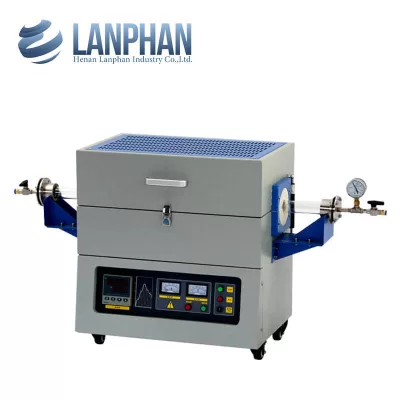Laboratory muffle furnaces come in various types and classifications based on their purpose, performance, and characteristics. Here are some common classifications of laboratory muffle furnaces:

1. **Classification by Heating Method**:
– **Resistance Furnace**: Utilizes resistance heating elements such as heating wires or heating rods to generate heat and heat up the samples.
– **Atmosphere-Controlled Furnace**: Equipped with atmosphere control features, allowing heating experiments to be conducted in controlled atmospheres, suitable for handling air-sensitive samples.
2. **Classification by Temperature Range**:
– **Low-Temperature Furnace**: Typically operates within the range of room temperature to several hundred degrees Celsius, used for experiments like sample drying and baking.
– **High-Temperature Furnace**: Capable of operating at high temperatures, typically ranging from hundreds of degrees Celsius to several thousand degrees Celsius, suitable for applications like material sintering, crucible tests, and high-temperature experiments.
3. **Classification by Control Mode**:
– **Digital Control Furnace**: Features digital temperature control and timing functions, allowing users to set and monitor temperature and heating time.
– **Programmable Control Furnace**: Can create and execute multi-segment programs, each with different temperature and time parameters, suitable for complex experimental requirements.
4. **Classification by Heating Chamber Capacity**:
– **Small Muffle Furnace**: Suitable for small samples or small-scale experiments, with a smaller heating chamber capacity.
– **Medium Muffle Furnace**: Used for general laboratory requirements, featuring a medium-sized heating chamber.
– **Large Muffle Furnace**: Possesses a large heating chamber capacity, typically used in industrial production or large-scale experiments.
5. **Classification by Special Features**:
– **Microwave Muffle Furnace**: Utilizes microwave radiation for sample heating, often used for rapid heating and sample digestion, suitable for fields like analytical chemistry.
– **Vacuum Muffle Furnace**: Allows heating experiments to be conducted under low pressure or vacuum conditions, suitable for applications such as degassing and high-temperature treatment.
– **Microanalysis Muffle Furnace**: Designed for heating and analysis of minute samples, typically used for trace element analysis and combustion of trace organic compounds.
These are some common classification categories for laboratory muffle furnaces. Depending on specific experimental needs and application areas, the appropriate type of muffle furnace can be selected.
